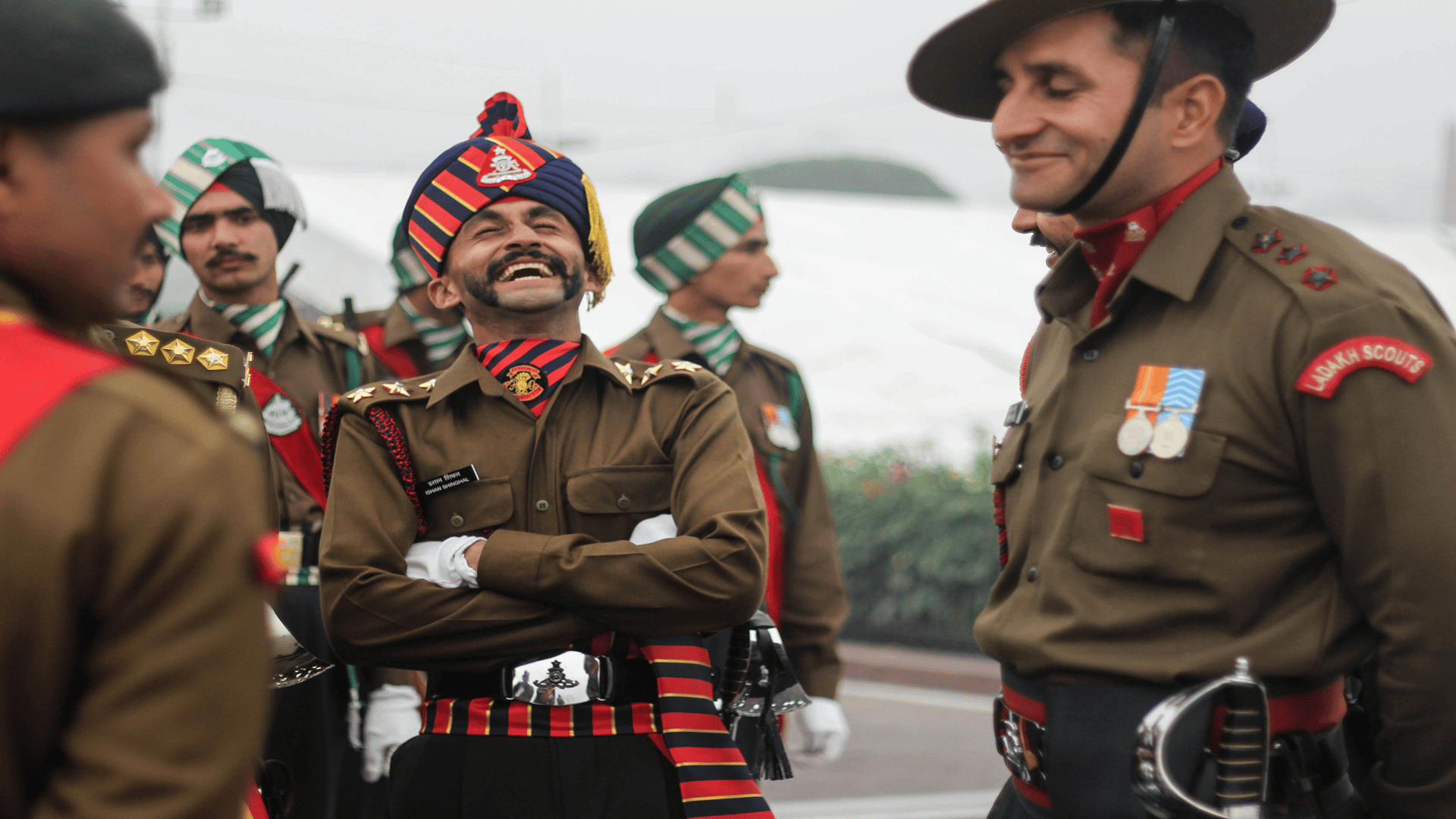Rajputana Rifles Foundation Day: Celebrating 250+ Years of Valour
Key Highlights
- The oldest rifle regiment of the Indian Army, established in 1775, with over 250 years of continuous service.
- Recipient of the highest wartime gallantry award, the Param Vir Chakra, and 6 Victoria Crosses during British rule.
- Played pivotal roles in Kargil, Indo-Pak Wars, and both World Wars, earning numerous battle honours.
- Known for its fierce war cry: "Raja Ramchandra Ki Jai", and its motto: Veer Bhogya Vasundhara.
- Home to a rich martial tradition, regimental museum, and a close-knit brotherhood of veterans and soldiers.
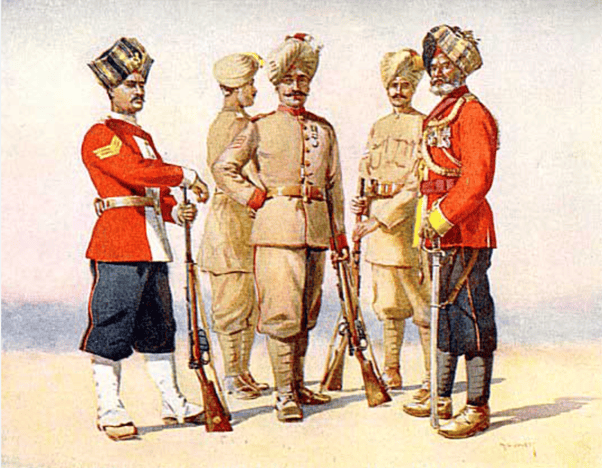
The Rajputana Rifles are the oldest rifle regiment of the Indian Army. Raised on 10 January 1775, the regiment has over 250 years of unbroken service to India. The Foundation Day is celebrated annually to honour its proud history, traditions, and the unmatched bravery of its soldiers.
Historical Timeline
Era | Key Developments |
|---|---|
1775 | Raised as the 5th Bombay Sepoys. |
19th Century | Participated in the Anglo-Afghan Wars, Persian Campaign, and Boxer Rebellion. |
1903 | Became the 104th Wellesley’s Rifles. |
1921 | Amalgamated into the 6th Rajputana Rifles with six battalions. |
1945 | Renamed as Rajputana Rifles. |
1947 | Became part of the Indian Army post-Independence. |
1948 | Havildar Piru Singh awarded Param Vir Chakra for bravery in the Indo-Pak war. |
1950s-60s | Served in Korea and the Congo under UN peacekeeping missions. |
1965-71 | Played critical roles in Indo-Pak wars, notably in battles like Poonch, Basantar, and Myanamati. |
1999 | Key role in Kargil War: captured Tololing Top and Point 4590. |
Today | Actively engaged in border defence and counter-insurgency operations. |
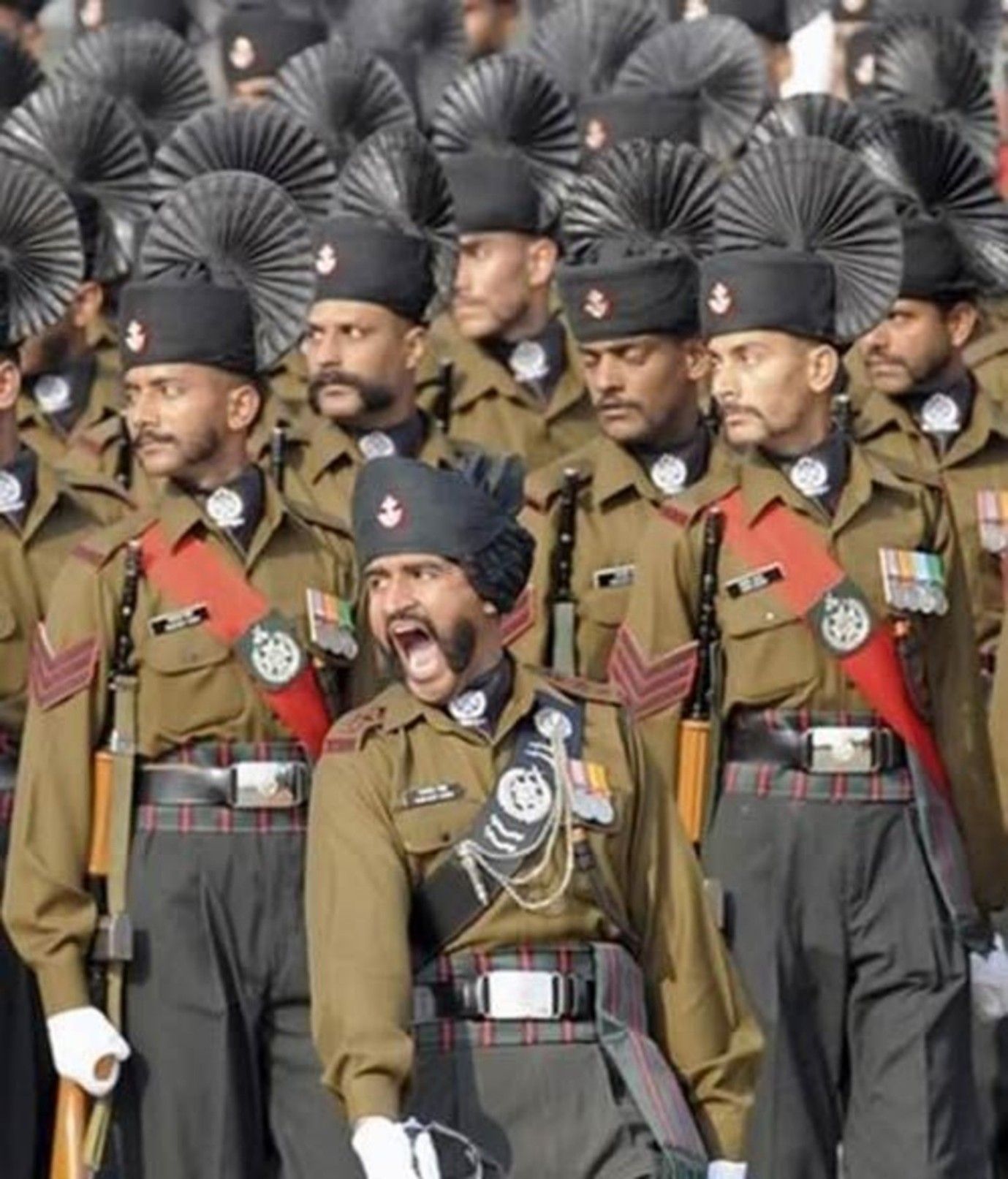
Role in Iconic Battles
First World War
The regiment fought gallantly in Europe, Mesopotamia, and East Africa. They earned 37 battle honours—the most by any Indian regiment during WWI. Their contributions were pivotal in battles like Kut-al-Amara and Gallipoli.
Second World War
During WWII, Rajputana Rifles battalions served in Burma, North Africa, Italy, and Malaya. Their resilience in jungle warfare and mountain operations became legendary.
Indo-Pak War (1948)
- Havildar Piru Singh, part of the 6th Battalion, launched a solo attack on enemy bunkers at Tithwal despite being gravely injured. He destroyed multiple positions before being martyred. Awarded the Param Vir Chakra posthumously.
Indo-Pak War (1965)
The regiment was involved in the Poonch sector, holding strategic ground under intense shelling. They repelled enemy attacks with superior tactics and courage, preserving critical territorial integrity.
Indo-Pak War (1971)
Units participated in both eastern and western fronts. In the Basantar Battle, the regiment launched a decisive assault under fire, capturing Pakistani positions and defending against counterattacks with tenacity.
Kargil War (1999)
- The 2nd Battalion (Rajputana Rifles), under Lt. Col. Ravindranath, carried out the successful capture of Tololing Top. This high-altitude operation was crucial for breaking the enemy’s stronghold.
- Major Vivek Gupta, a young officer, led a daring charge under enemy fire and was posthumously awarded the Maha Vir Chakra.
- Havildar Digendra Kumar showed unmatched bravery by destroying enemy bunkers and leading troops through intense gunfire. His actions earned him the Maha Vir Chakra.
These battles, spanning two centuries, have defined the Rajputana Rifles as one of the fiercest and most decorated regiments in military history.
Awards & Honours
Award | Count |
|---|---|
Param Vir Chakra | 1 |
Maha Vir Chakra | 10 |
Vir Chakra | 41 |
Shaurya Chakra | 25 |
Ashoka Chakra | 1 |
Padma Bhushan | 1 |
Victoria Cross (British Era) | 6 |
Sena Medal | 112 |
Other Distinguished Service Awards | Numerous |
The regiment has also earned 37 battle honours in World War I alone – the most for any Indian regiment during that era.
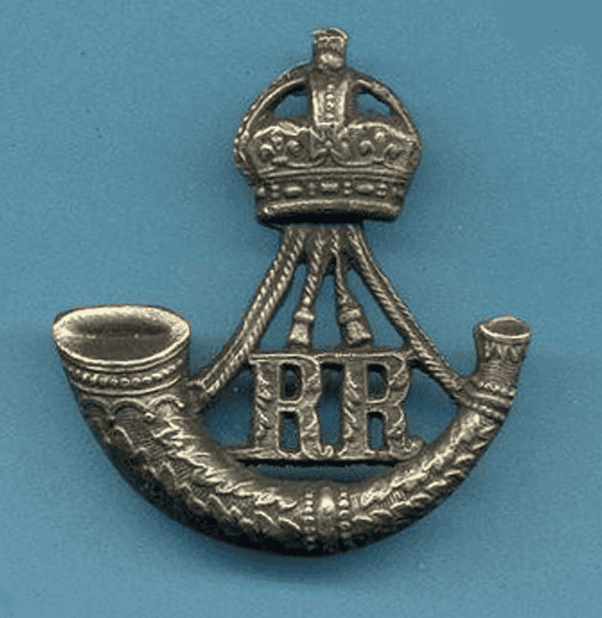
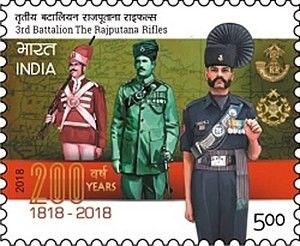
Regimental Traditions
The Rajputana Rifles maintains a deep sense of tradition rooted in its martial history, regimental pride, and community spirit. These traditions play a crucial role in fostering unity, discipline, and a shared legacy among its troops.
- Regimental Centre: Located in Delhi Cantonment, it serves as the hub for training, administration, and ceremonial functions. It is home to both serving personnel and veterans.
- Rajputana Rifles Museum: Spanning 7,000 sq. ft., the museum showcases weaponry, historical artefacts, uniforms, medals, and multimedia exhibits. It tells the story of the regiment’s journey from its inception to modern-day exploits.
- Regimental Insignia: A bugle horn symbolising the rifle regiment heritage is flanked by crossed katars—traditional Rajput daggers—representing bravery and martial prowess.
- Ceremonial Parade Dress: Soldiers proudly wear traditional uniforms during regimental parades and Foundation Day events. The distinct Rajasthani moustaches, symbolic of valour and identity, enhance their appearance.
- Battle Cry: The spirited shout of "Raja Ramchandra Ki Jai!" echoes through battlefields and training grounds, reinforcing courage and a strong sense of purpose.
- Community and Brotherhood: The regiment places a strong emphasis on fostering a sense of community and brotherhood. Veterans are regularly invited to regimental functions, and oral histories are passed down to keep the lineage alive.
- Annual Foundation Day Events: A time-honoured tradition, celebrated with military drills, cultural programmes, regimental dinners, and memorial services for the fallen.
- War Memorial and Honour Boards: The Regimental Centre houses memorials and walls inscribed with the names of gallant soldiers who laid down their lives in service to the nation.
These practices not only preserve military customs but also nurture pride, honour, and identity across generations of Rajputana Rifles soldiers.
13th June: Raising Day of 1 Rajputana Rifles
While the regiment as a whole celebrates its Foundation Day on 10 January, the 1st Battalion of the Rajputana Rifles observes its Raising Day on 13 June every year. This day marks the formation of the original battalion within the regiment and holds deep historical significance.
The celebrations on 13 June include:
- Ceremonial parades showcase regimental pride.
- Homage to martyrs through wreath-laying and commemorations.
- Cultural events and unit-level gatherings to strengthen esprit de corps.
It serves as a moment for reflection, honour, and unity for the personnel of 1 RAJ RIF, linking their modern service to an age-old legacy of valour.
Why is Foundation Day Celebrated?
Foundation Day is a time to:
- Celebrate 250+ years of the regiment’s valour.
- Honour the sacrifices of fallen heroes.
- Strengthen camaraderie among serving personnel and veterans.
- Remember historic victories and battles that shaped the regiment’s identity.
The day is marked by:
- Parades and ceremonial functions.
- Wreath-laying to honour martyrs.
- Cultural events and award ceremonies.
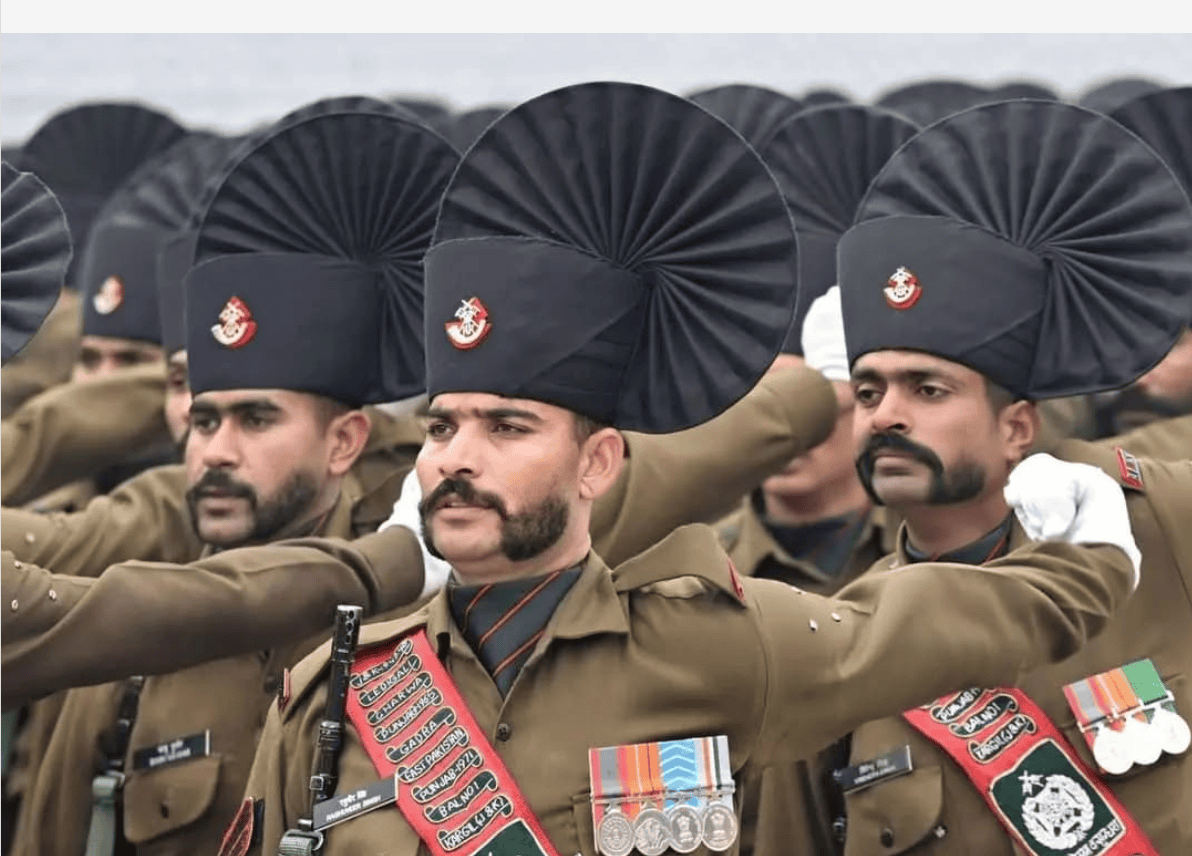
Legacy That Marches On
With over 250 years of unbroken service, the Rajputana Rifles isn't just a regiment—it’s a living symbol of India's military excellence. From the rugged mountains of Kargil to the trenches of the World Wars, their story is carved in blood, honour, and unmatched dedication. As new challenges arise, the Rajputana Rifles continues to inspire with its unwavering spirit and timeless motto: Veer Bhogya Vasundhara.
Their legacy is not just in the medals won or battles fought, but in every soldier who wears the insignia with pride. Foundation Day is more than a commemoration—it's a salute to an institution that embodies courage, sacrifice, and patriotism. The Rajputana Rifles will forever remain a source of national pride, a regiment whose every step echoes with history.
FAQs
1. When was the Rajputana Rifles founded?
The Rajputana Rifles were founded on 10 January 1775, originally raised as the 5th Bombay Sepoys under British rule. It is the oldest rifle regiment in the Indian Army.
2. Why is Foundation Day celebrated?
Foundation Day is celebrated to commemorate the regiment’s establishment and to honour over two centuries of courageous service, sacrifice, and commitment to the nation.
3. What is their motto?
The motto of the Rajputana Rifles is Veer Bhogya Vasundhara, which translates to "The brave shall inherit the earth." It reflects the warrior spirit and ethos of the regiment.
4. What is the battle cry of the regiment?
The battle cry is "Raja Ramchandra Ki Jai!"—a chant invoking Lord Ram that boosts morale and unity during combat operations.
5. Who was Havildar Piru Singh?
Havildar Piru Singh was a soldier of the 6th Battalion who showed extraordinary courage during the 1948 Indo-Pak war at Tithwal. Despite severe injuries, he continued attacking enemy bunkers until he was martyred. He was posthumously awarded the Param Vir Chakra.
6. What role did the regiment play in Kargil?
The Rajputana Rifles played a critical role in the Kargil War of 1999, particularly in capturing Tololing Top and Point 4590. Officers like Major Vivek Gupta and Havildar Digendra Kumar showed exceptional bravery in these missions.
7. How many battalions are there?
There are currently 25 battalions of the Rajputana Rifles, some of which are also deployed with the Rashtriya Rifles for counter-insurgency operations.
8. Where is the regimental museum?
The regimental museum is located in the Rajputana Rifles Regimental Centre in Delhi Cantonment. It showcases the glorious history and heritage of the regiment.
9. How many Victoria Crosses has the regiment won?
During the British era, members of the regiment were awarded six Victoria Crosses, which were among the highest honours for valour in the British military.
10. Can civilians attend the Foundation Day events?
Foundation Day events are primarily organised for serving soldiers and veterans. However, dignitaries and special guests may be invited, though general public access is typically restricted.
Related Articles
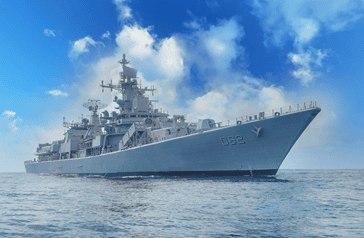
Indian Navy Day 2025 celebrates the courage and discipline of India’s sea warriors. This guide covers the theme, history, Operation Trident, key missions and achievements of the Navy.
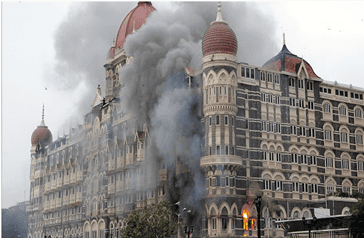
The 26 November Mumbai attacks were a major terror strike that tested India’s security forces. This guide explains the full timeline, police and armed forces response, casualties, operations and facts that many people do not know.
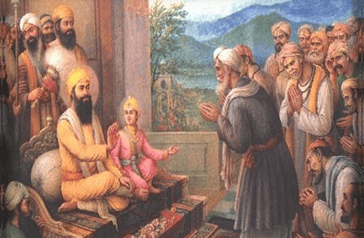
Guru Tegh Bahadur Martyrdom Day honours the ninth Sikh Guru who gave his life to protect religious freedom in 1675. His courage, values and legacy continue to inspire millions across India and worldwide.
Related Post

Indian Navy Day 2025 celebrates the courage and discipline of India’s sea warriors. This guide covers the theme, history, Operation Trident, key missions and achievements of the Navy.

The 26 November Mumbai attacks were a major terror strike that tested India’s security forces. This guide explains the full timeline, police and armed forces response, casualties, operations and facts that many people do not know.

Guru Tegh Bahadur Martyrdom Day honours the ninth Sikh Guru who gave his life to protect religious freedom in 1675. His courage, values and legacy continue to inspire millions across India and worldwide.

